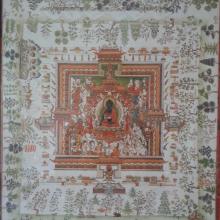What were drugs? Were they gateways to divine realms, protectors from demonic plagues, commodities for trade, markers of authority, or means to stabilize the population? This project branches off from the Social Geography project, by examining the ways in which the material properties of drugs changed as they migrated across different epistemic, geographic, social and linguistic domains. Records from early medieval China describe a diverse range of actors who intersected in the drug trade: pickers, sellers, doctors, Buddhists and Daoists. Each of these actors adapted and adopted drugs within different plans and agendas, trying to make them work in different ways towards different ends. How can we better account for this complexity, and the currencies of meaning, money and authority within which these drugs circulated?
This project explores the limits and opportunities of existing resources for identifying the different ways in which these actors interacted with, represented and understood drugs and drug lore. The project marks a departure from traditional, genealogical developmental models of drug history in China by identifying innovative critical methodologies hand in hand with developing new digital tools for exploring these questions.



